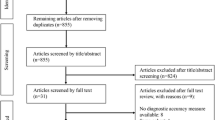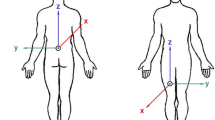Abstract
Falls are by far the leading cause of fractures and accidents in the home environment. The current Cochrane reviews and other systematic reviews report on more than 200 intervention studies about fall prevention. A recent meta-analysis has summarized the most important risk factors of accidental falls. However, falls and fall-related injuries remain a major challenge. One novel approach to recognize, analyze, and work better toward preventing falls could be the differentiation of the fall event into separate phases. This might aid in reconsidering ways to design preventive efforts and diagnostic approaches. From a conceptual point of view, falls can be separated into a pre-fall phase, a falling phase, an impact phase, a resting phase, and a recovery phase. Patient and external observers are often unable to give detailed comments concerning these phases. With new technological developments, it is now at least partly possible to examine the phases of falls separately and to generate new hypotheses.
The article describes the practicality and the limitations of this approach using body-fixed sensor technology. The features of the different phases are outlined with selected real-world fall signals.
Zusammenfassung
Stürze sind die mit Abstand häufigsten Ursachen von Frakturen und häuslichen Verletzungen im Alter. In den Cochrane Reviews und anderen systematischen Analysen wurden mehr als 200 randomisierte Interventionsstudien zur Sturzprävention erfasst. Eine neue Metaanalyse liegt für die Risikofaktoren von Stürzen vor. Dennoch bleiben Stürze und sturzbedingte Verletzungen eine große Herausforderung. Ein neuer Ansatz zur Erkennung, Analyse und Prävention von Stürzen ist es, Stürze in Abschnitte aufzuteilen. Dies könnte bei der Erstellung diagnostischer und präventiver Ansätze helfen. Phänomenologisch ist offenkundig, dass es eine Vorphase, Fallphase, Aufprallphase, Ruhephase und mögliche Erholungsphase gibt. Patienten und Fremdbeobachter sind allerdings nicht in der Lage, hierzu exakte Angaben zu machen. Durch technologische Neuentwicklungen ist es nunmehr möglich, diese Abschnitte zumindest teilweise zu beurteilen und daraus erste Hypothesen abzuleiten.
Der Artikel beschreibt dabei die Praktikabilität und Beschränkungen der Verwendung von am Körper getragenen Sensoren. Die Sturzphasen werden anhand von Fallbeispielen verdeutlicht.





Similar content being viewed by others
References
Cummings SR, Nevitt MC (1989) A hypothesis: the causes of hip fractures. J Gerontol 44:M107–M111
Lamb SE, Jorstad-Stein EC, Hauer K, Becker C (2005) Development of a common outcome data set for fall injury prevention trials: the Prevention of Falls Network Europe consensus. J Am Geriatr Soc 53:1618–1622
Hauer K, Lamb SE, Jorstad EC et al (2006) Systematic review of definitions and methods of measuring falls in randomised controlled fall prevention trials. Age Ageing 35:5–10
Zieschang T, Schwenk M, Becker C et al (2011) Feasibility and accuracy of fall reports in persons with dementia: a prospective observational study. Int Psychogeriatr 1–12
Lord SR, Sherrington C, Menz HB (2005) Falls in older people—risk factors and strategies for prevention. Cambridge University Press
Campbell AJ (2008) Falls in older people. BMJ 337:a2320
Zecevic AA, Salmoni AW, Lewko JH (2009) Utilization of the Seniors Falls Investigation Methodology to identify system-wide causes of falls in community-dwelling seniors. Gerontologist 49:685–696
Parkkari J, Kannus P, Palvanen M et al (1999) Majority of hip fractures occur as a result of a fall and impact on the greater trochanter of the femur: a prospective controlled hip fracture study with 206 consecutive patients. Calcif Tissue Int 65:183–187
Deandrea S, Lucenteforte E, Bravi F et al (2010) Risk factors for falls in community-dwelling older people: a systematic review and meta-analysis. Epidemiology 21:658–668
Gillespie LD, Robertson MC, Gillespie WJ et al (2012) Interventions for preventing falls in older people living in the community. Cochrane Database Syst Rev CD007146
Cameron ID, Murray GR, Gillespie LD et al (2010) Interventions for preventing falls in older people in nursing care facilities and hospitals. Cochrane Database Syst Rev CD005465
Robinovitch SN, Feldman F, Yang Y et al (2012) Video capture of the circumstances of falls in older adults residing in long-term care. Lancet (in press). DOI 10.1016/S0140-6736(12)61263-X
Bagala F, Becker C, Cappello A et al (2012) Evaluation of accelerometer-based fall detection algorithms on real-world falls. PLoS One 7:e37062
Klenk J, Becker C, Lieken F et al (2011) Comparison of acceleration signals of simulated and real-world backward falls. Med Eng Phys33:368–373
Kangas M, Vikman I, Nyberg L et al (2012) Comparison of real-life accidental falls in older people with experimental falls in middle-aged test subjects. Gait Posture 35:500–505
Hayes WC, Myers ER, Robinovitch SN et al (1996) Etiology and prevention of age-related hip fractures. Bone 18:77S–86S
Tideiksaar R (1998) Falls in older persons: prevention and management
Srinivasan S, Han J, Lal D, Gacic A (2007) Towards automatic detection of falls using wireless sensors. Conf Proc IEEE Eng Med Biol Soc 2007:1379–1382
Noury N, Rumeau P, Bourke AK et al (2008) A proposal for the classification and evaluation of fall detectors. IRBM 29:340–349
Quagliarella L, Sasanelli N, Belgiovine G (2008) An interactive fall and loss of consciousness detector system. Gait Posture 28:699–702
Nyan MN, Tay FE, Murugasu E (2008) A wearable system for pre-impact fall detection. J Biomech 41:3475–3481
Lindemann U, Hock A, Stuber M et al (2005) Evaluation of a fall detector based on accelerometers: a pilot study. Med Biol Eng Comput 43:548–551
Boissy P, Choquette S, Hamel M, Noury N (2007) User-based motion sensing and fuzzy logic for automated fall detection in older adults. Telemed J E Health 13:683–693
Groen BE, Weerdesteyn V, Duysens J (2007) Martial arts fall techniques decrease the impact forces at the hip during sideways falling. J Biomech 40:458–462
Rapp K, Becker C, Cameron ID et al (2012) Femoral fracture rates in people with and without disability. Age Ageing 41:653–658
Bourke AK, O’Brien JV, Lyons GM (2007) Evaluation of a threshold-based tri-axial accelerometer fall detection algorithm. Gait Posture 26:194–199
Fleming J, Brayne C (2008) Inability to get up after falling, subsequent time on floor, and summoning help: prospective cohort study in people over 90. BMJ 337:a2227
Mellone S, Tacconi C, Schwickert L et al (2012) Smartphone-based solutions for fall detection and prevention: the FARSEEING approach. Z Geriatr Gerontol (in press)
Acknowledgments
The following experts are part of the FARSEEING consensus group and contributed to the discussion: Christophe Büla, Centre Hospitalier Universitaire Vaudois Lausanne, Switzerland; Michele Carenini, NoemaLife spa, Italy; Kim Delbaere, Neuroscience Research Australia, Australia; Matthias Gietzelt, University of Braunschweig and Hannover Medical School, Germany; Klaus Hauer, Agaplesion Bethanien Hospital Heidelberg, Germany; Jeffrey M. Hausdorff, Beth Israel Deaconess Medical Center and Harvard Medical School, USA and Israel; Helen Hawley, University of Manchester, United Kingdom; Anisoara Ionescu, EPFL Lausanne, Switzerland; Maarit Kangas, University of Oulu, Finland; Fabio La Porta, Azienda USL di Modena, Italy; Stephen Lord, Neuroscience Research Australia, Australia; Walter Mätzler, University of Tübingen, Germany; Michael Marschollek, University of Braunschweig and Hannover Medical School, Germany; Norbert Noury, University of Lyon, France; Rachel Potter, University of Warwick, United Kingdom; Kilian Rapp, Robert-Bosch Hospital Stuttgart and University of Ulm, Germany; Stephen Redmond, University of New South Wales, Australia; Stephen Robinovitch, Simon Fraser University, Canada; Stephane Rochat, Centre Hospitalier Universitaire Vaudois Lausanne, Switzerland; Johannes Salb, University of Erlangen, Germany; Michael Schwenk, Agaplesion Bethanien Hospital Heidelberg, Germany; Michael Setton, SENSARIS, France; Olav Sletvold, Norwegian University of Science and Technology, Norway; Stuart Smith, Neuroscience Research Australia, Australia; Matthis Synofzik, University of Tübingen, Germany; Enrico Valtolina, Bticino spa, Italy; Aleksandra Zecevic, Western University London Ontario, Canada; Tania Zieschang, Agaplesion Bethanien Hospital Heidelberg, Germany. The FARSEEING project is being funded by the European Commission. The companies participating in the FARSEEING project had no influence on the writing of the manuscript and the presented results.
Conflict of interest
On behalf of all authors, the corresponding authors state that there are no conflicts of interest.
Author information
Authors and Affiliations
Consortia
Corresponding authors
Rights and permissions
About this article
Cite this article
Becker, C., Schwickert, L., Mellone, S. et al. Proposal for a multiphase fall model based on real-world fall recordings with body-fixed sensors. Z Gerontol Geriat 45, 707–715 (2012). https://doi.org/10.1007/s00391-012-0403-6
Published:
Issue Date:
DOI: https://doi.org/10.1007/s00391-012-0403-6




